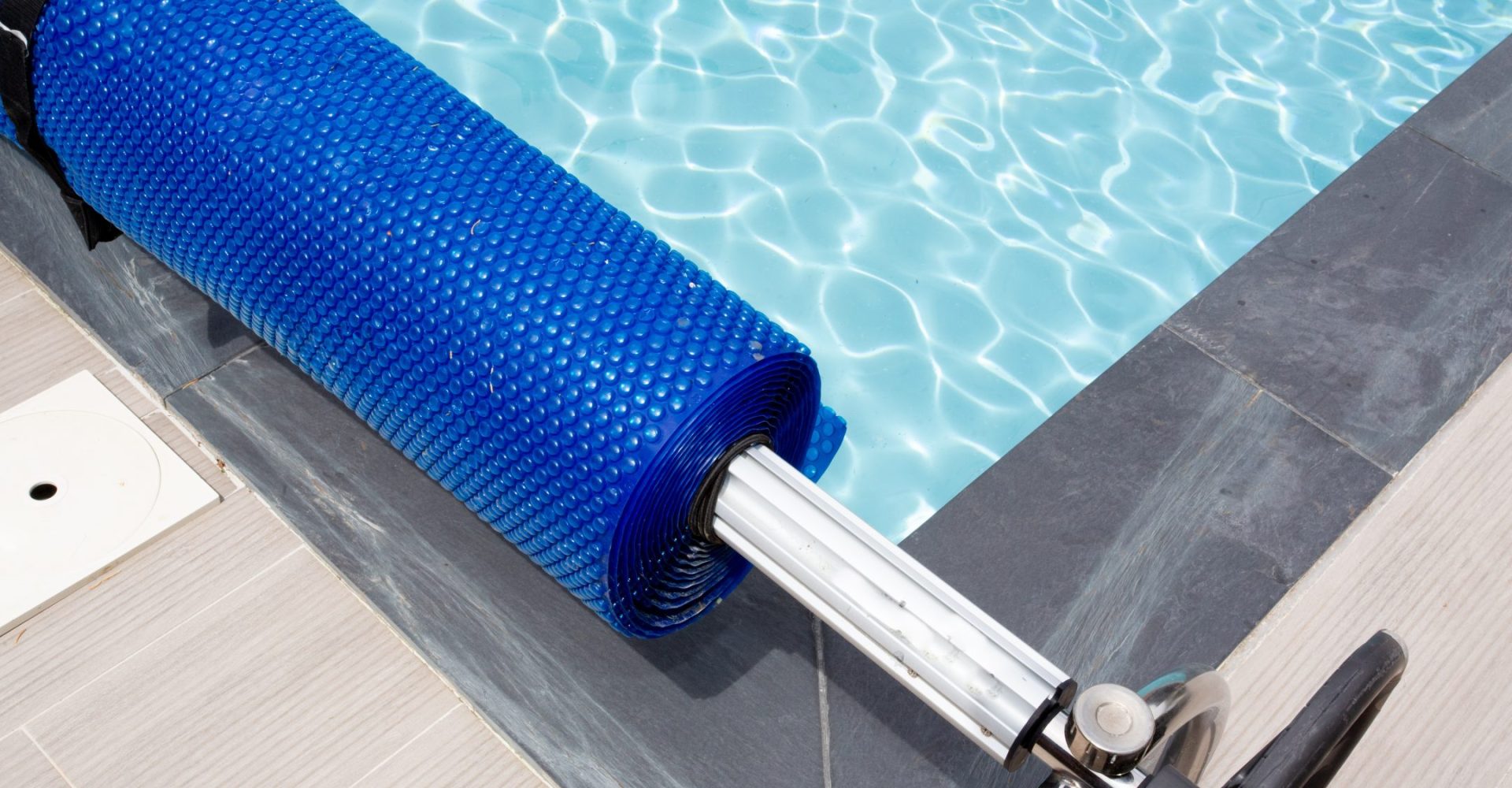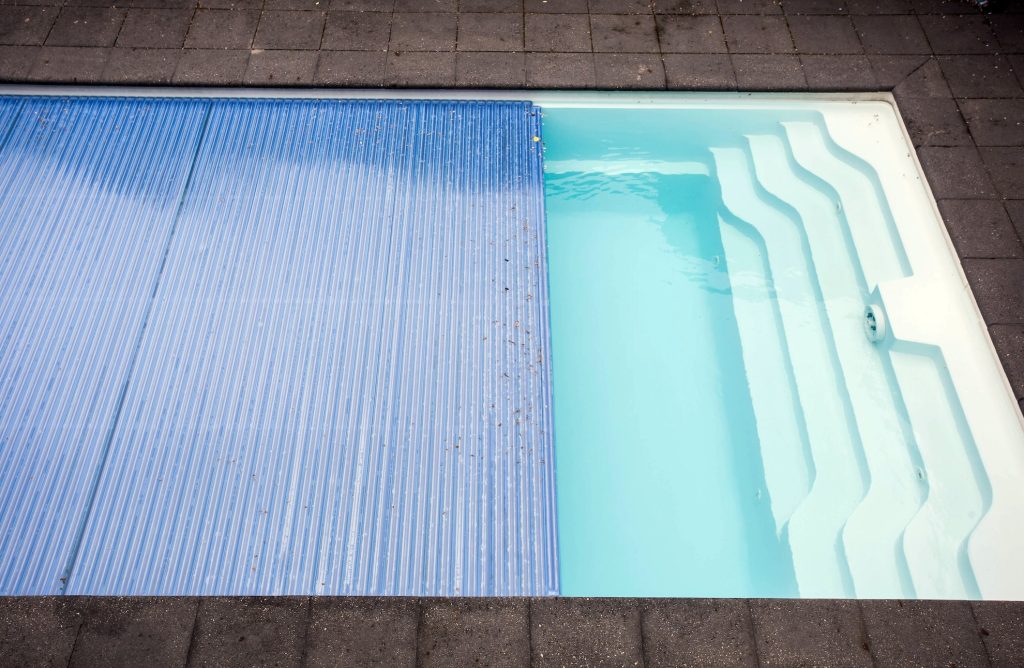
Cooler weather is coming in October, and this is the time when many pool owners wonder if there’s a cost-effective way to extend the season and keep the water a little warmer. The hard fact is that a pool doesn’t lose most of its heat to a cool fall or winter air temperature. The big heat drain is evaporation, making pool covers for heat retention the best way to extend the swim season and keep utility bills down.
In this article, we’ll take a closer look at the best pool cover options and how they stack up on performance, safety, and maintenance for Minnesota winters.
Using a pool cover is the fastest way to achieve energy efficient pool heating, since less heat is wasted to evaporation and wind.
In pools, up to 70% of heat loss occurs through evaporation and not through contact with cool air. When water evaporates, it takes energy from the water’s surface heat in the same way that sweat cools your skin. Because the majority of pool heat loss evaporation happens at night, covering your pool after sundown delivers the biggest benefit to reduce pool evaporation.
If your pool loses an inch of water to evaporation per week, that’s a lot of water and a lot of make-up heat. A pool cover can reduce pool evaporation by 90-95%, helping you save hundreds on utility bills every season while also protecting your investment.

All safety covers should have an ASTM F1346 compliance rating to pass standards set by the American Society of Testing and Materials. For families, ASTM F1346 safety certification is non-negotiable, since it ensures the cover can withstand weight and meet barrier standards.
Not all pool covers are safe to walk on. Only ASTM-rated safety covers are built to withstand the weight of a person. Solar blankets, liquid covers, and automatic covers are NOT safe walk-on surfaces. Even with a cover in place, it’s essential to practice child safety around pools by using barriers, alarms, and supervision.
If you’re budgeting for pool covers as part of pool ownership, it helps to understand how much a pool costs in Minnesota.
A winter pool cover in Minnesota must withstand heavy snow buildup. A mesh or hybrid safety cover is best to avoid collapse.
If your pool has special requirements for coping, ladders, or rails, ensure your pool cover is fitted to pool anchors which have pre-determined spacing and placement requirements.
Tracer Pool & Landscape can assist with sizing, hardware selection, and installation services.
Pairing a heat pump with cover protection allows the heater to cycle less often while still maintaining comfortable water temperatures. This results in lower monthly energy bills, prolonged heat pump lifespan, and quicker payback on your pool equipment.
With a little care, many years of useful life can be added to a pool cover lifespan. Also, always check that your pool cover is made from UV resistant cover material, since constant sun exposure quickly breaks down cheaper fabrics.
Indoor pool covers cut evaporation, reducing humidity, and lower ventilation and energy costs.
Some issues can also stem from construction choices, so be sure to read about common problems with fiberglass pools and solutions to them.
Before purchasing a pool cover, make sure you’ve considered:
When in doubt, hire Tracer Pool & Landscape for accurate measurement, hardware consultation, and automatic system installation. For step-by-step instructions on seasonal pool care, check out our guide on how to safely close your pool for the off-season.

Yes. A solar cover can raise pool temperatures by 5–10°F, and all covers reduce overnight water loss.
Solar bubble covers are best in terms of price-performance ratio.
Not very effective. It’s a better choice in mild or indoor pools.
Mesh drains off water but lets in fine debris and light. Solid blocks everything but requires a pump.
Check the product packaging for the certification or confirm directly with the manufacturer.
No. You need to choose one or the other.
With templates or by hiring a professional like Tracer Pool & Landscape for a custom fit.
Yes, by up to half.
Thousands of gallons annually, depending on the pool size.
Clean the cover, inspect hardware, and pump pooled water.
Yes, for solid covers in Minnesota winters.
Only ASTM-certified safety covers can be walked on.
Poor sizing, leaving covers on during shocking, ignoring pooled snow and water.
Tearing, UV cracking, or failed springs = time to replace. Small strap repairs are okay.
While cool weather is a seasonal fact of life in Minnesota, the number one cause of pool heat loss is evaporation. So when it comes to balancing comfort, cost savings, and efficiency, pool covers for heat retention offer homeowners the single biggest return on investment.
From budget solar blankets to heavy-duty safety and automatic systems, there’s a right cover to pay you back in terms of added warmth, lower bills, and years of peace of mind. To find the right fit for your pool and your goals, contact Tracer Pool & Landscape today for expert sizing, hardware, and installation support.